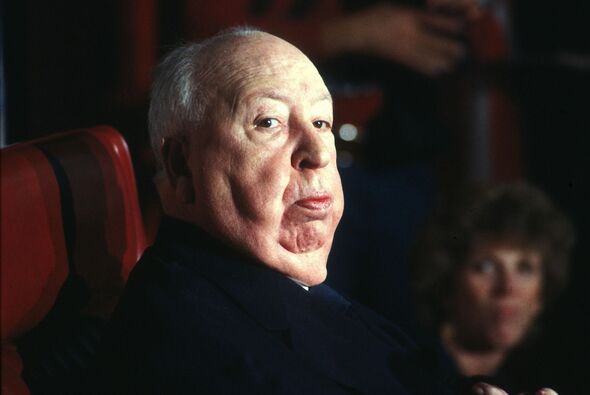Entertainment
Alfred Hitchcock’s Fallout with Michael Caine over ‘Frenzy’

Alfred Hitchcock and Michael Caine had a falling out that stemmed from Caine’s refusal to take on a role in Hitchcock’s controversial film, Frenzy. The director, known for his often domineering demeanor, was particularly incensed when Caine rejected the lead part of Robert Rusk, a character that represented the most graphically violent themes of Hitchcock’s career.
The conflict arose in the early 1970s, a time when Caine was enjoying significant success with films like Get Carter and Alfie. Hitchcock had high hopes for casting Caine in Frenzy, which would be his first film shot entirely in England since Stage Fright in 1950. Caine’s ethical stance against the film’s violent and sexual content led him to decline the offer, resulting in a bitter rift with the legendary filmmaker.
The Controversial Themes of Frenzy
Released in 1972, Frenzy became infamous for its explicit content, including four nude scenes and a graphic portrayal of violence against women. Caine found the character of Rusk—based on a true serial killer—unacceptable, stating, “He offered me the part of a sadist who murdered women and I won’t play that. I have a sort of moral thing and I refused to play it.” Despite the film’s eventual commercial success, grossing over $12 million against a $2 million budget, Caine’s rejection marked the end of any potential collaboration between the two icons.
Caine was not alone in his views; several other prominent actresses, including Helen Mirren and Vanessa Redgrave, also declined roles in Frenzy. Additionally, Eileen Atkins criticized the screenplay as “disgusting.” Even Hitchcock’s own daughter barred her children from watching the film, highlighting the significant backlash surrounding its themes.
Enduring Silence and Irony
Despite his initial success and the desire to work with Hitchcock, Caine’s refusal to participate in the film led to a long-standing silence between the two. Caine recounted, “I would see him every Friday at Chasen’s restaurant (in Los Angeles) and he would totally ignore me.” This estrangement persisted throughout Hitchcock’s life, as he would only direct one more film, Family Plot, in 1976.
Interestingly, Caine later starred in films that explored similar dark themes, such as Dressed to Kill and The Hand, which delve into violence and disturbed sexuality. This irony has not gone unnoticed, as the actor reflected on how his career evolved after the fallout.
Years later, Caine and his wife, Shakira, attended the Seventh Annual American Film Institute Lifetime Achievement Awards honoring Hitchcock on March 7, 1979, at the Beverly Hilton Hotel. Whether the two exchanged words remains unclear, but the event marked a poignant moment in the history of two cinematic legends whose paths diverged due to creative differences.
Regardless of their personal conflict, Frenzy has since been re-evaluated and praised by critics, with its blend of dark humor and unsettling content earning a place in Hitchcock’s storied filmography. The film serves as a testament to the challenges and complexities of collaboration in the film industry, particularly when artistic visions clash.
-

 Science2 weeks ago
Science2 weeks agoIROS 2025 to Showcase Cutting-Edge Robotics Innovations in China
-

 Politics2 weeks ago
Politics2 weeks agoJudge Considers Dismissal of Chelsea Housing Case Citing AI Flaws
-

 World2 weeks ago
World2 weeks agoBravo Company Veterans Honored with Bronze Medals After 56 Years
-

 Top Stories2 weeks ago
Top Stories2 weeks agoIndonesia Suspends 27,000 Bank Accounts in Online Gambling Crackdown
-

 Lifestyle2 weeks ago
Lifestyle2 weeks agoStone Island’s Logo Worn by Extremists Sparks Brand Dilemma
-

 Health2 weeks ago
Health2 weeks agoStartup Liberate Bio Secures $31 Million for Next-Gen Therapies
-

 Sports2 weeks ago
Sports2 weeks agoMel Kiper Jr. Reveals Top 25 Prospects for 2026 NFL Draft
-

 Health2 weeks ago
Health2 weeks agoTop Hyaluronic Acid Serums for Radiant Skin in 2025
-

 World2 weeks ago
World2 weeks agoHoneywell Predicts Record Demand for Business Jets Over Next Decade
-

 Lifestyle2 weeks ago
Lifestyle2 weeks agoMary Morgan Jackson Crowned Little Miss National Peanut Festival 2025
-

 Politics2 weeks ago
Politics2 weeks agoNew Jersey Voters Urged to Register Ahead of November Election
-

 Sports2 weeks ago
Sports2 weeks agoYamamoto’s Mastery Leads Dodgers to 5-1 Victory in NLCS Game 2









